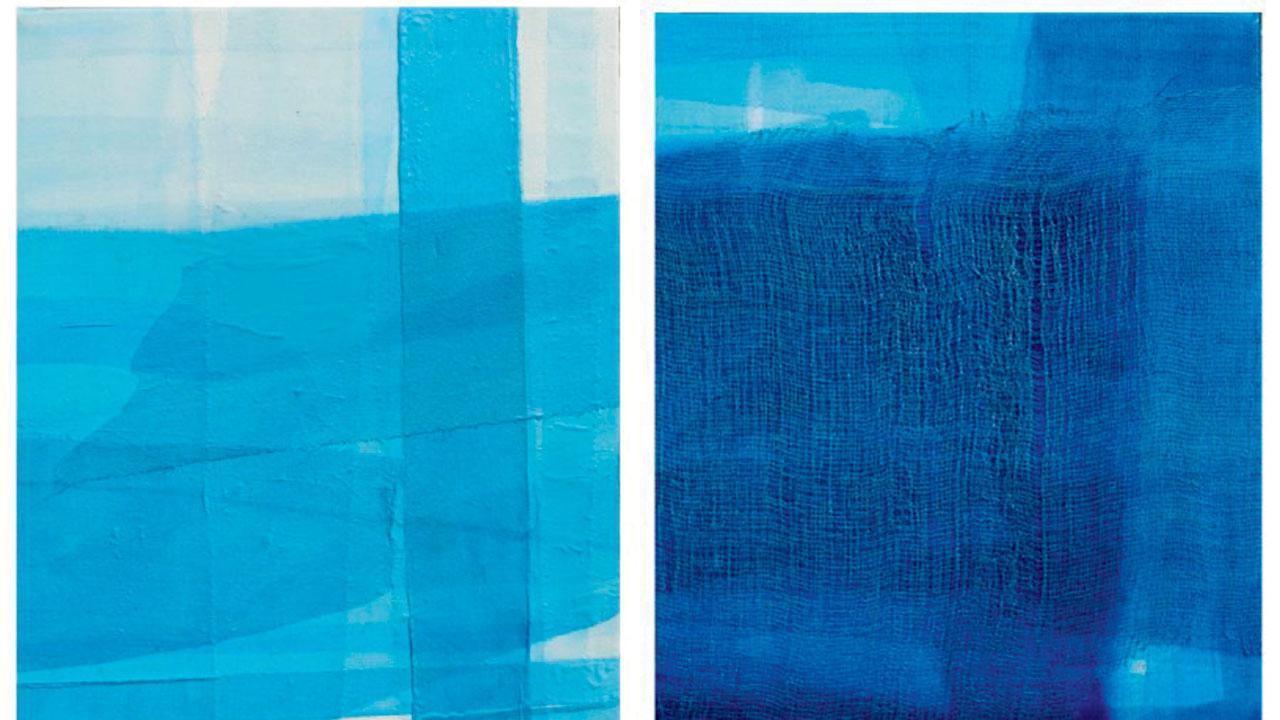An exhibition in the city’s art district draws attention to the forgotten artists from Mumbai’s historic, yet neglected, suburbs like Mumbra and Bhiwandi

Kazi’s work has an undeniable Rohtkoish influence. Pic courtesy/Sumesh Sharma
The packed, dense lanes of Bhiwandi, a town in Thane district, are home to around 6,000 powerlooms. Bhiwandi’s emergence as a manufacturing and warehousing hub is not simply a matter of commerce but the story of a religious minority and its tryst with the radicalisation of society.
To draw attention to that, Mukhtar Kazi, 47, a Mumbra-based artist, made a point to utilise “manchester cotton”, or as the locals call it, “manjarpatta” produced in the city, for all his artworks now on display at Stranger House Gallery. The establishment’s latest group exhibition, People Painting, or Lok Chitra in Colaba, features six artists, and highlights the different realities of various communities in India.
Manjarpatta, the industrial, raw linen cotton cloth, is used to create art canvases, yet those involved in making these tools hardly ever get to use it. Kazi, a self-taught artist, is an exception. He utilises medium and form to highlight his cultural heritage. Using manjarpatta is how he pays homage to his mother, who hails from Bhiwandi. The deep blue hues entrenched on the canvas are reminiscent of the ocean that his grandfather traversed as a Sarang ship captain prior to independence.
Even as an established realistic painter, he chose to take up abstraction because of his conceptual worldview. According to Kazi, who has spent the last decade practising the visual art genre, it’s all about the emotions. “For me, it’s the highest form of artistry. Only those with much experience can truly convey what they wish through abstract art.”

The exhibition features six artists. Kazi’s collection opened the show which also features the works of Shivnath Ram, Upendra Ram, Madan Pawar, Audambar Rudrawar and Naval Jijina. Pic/Anurag Ahire
Blue—the recurring colour in Kazi’s paintings—is a clear motif, symbolising the sky, medication, and often, water. The lighting in the image created, Kazi believes, was guided by his ancestors. The first painting he ever made was a ship using chalk and slate, which his grandfather, Ibrahim Sarang, found quite delightful, thus encouraging the young artist to pursue his talent.
Sumesh Sharma, the curator of the exhibition, highlights the relevance of Kazi’s work: “While the modern art tradition in India is very much influenced by Konkani Muslim artists like Abdul Aziz Raiba, AA Amelkar, and Abalal Rahiman, the participation of Muslim artists today is very minimal. They’re not the stars. The active marginalisation is very prominent.”
He tells mid-day about the Yemini traders who came to India, settled, and built communities along the Konkan belt. “One must not forget that places like Vasai, Virar, Bhiwandi, and Mumbra preceded Mumbai and were important ports. These ports were managed by Kokani Shafi’i Muslims. They add to our common history,” says Sharma. Such histories are reflected in Kazi’s work that opens the exhibition—one does not expect
an artist to emerge from an industrial suburb. The rhetoric surrounding the exhibition is about the lingering question of identity, and by employing the subtle elements of colour, these artists have depicted this ongoing process of self-determinism in a diverse population.
 Subscribe today by clicking the link and stay updated with the latest news!" Click here!
Subscribe today by clicking the link and stay updated with the latest news!" Click here!










